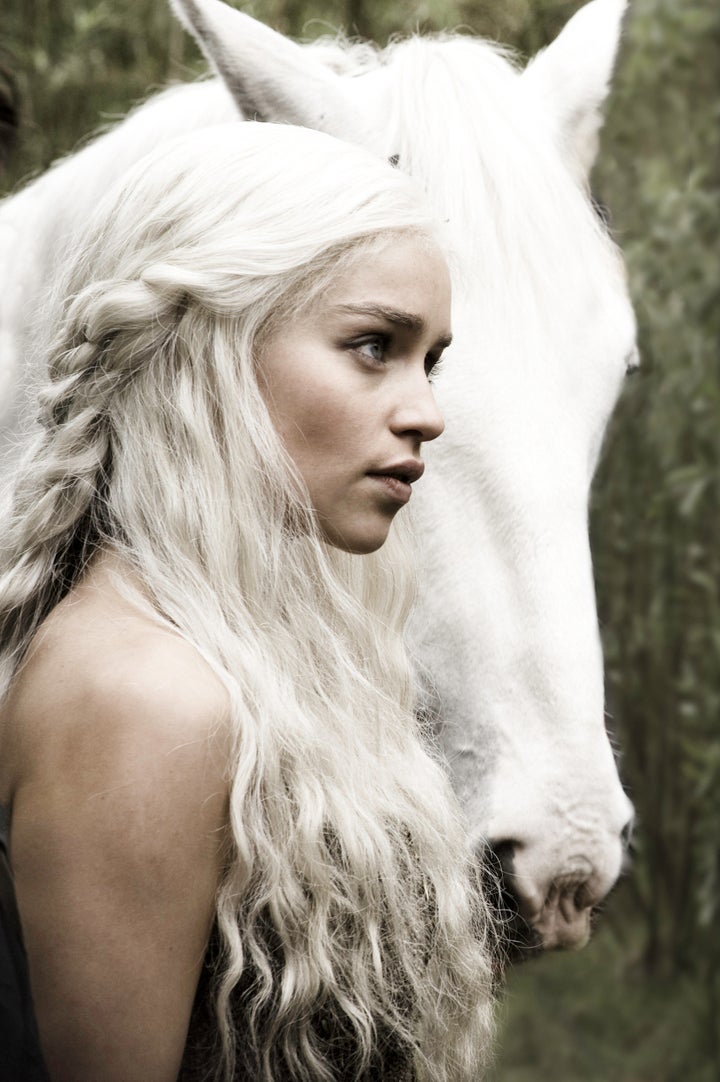
In the popular HBO show Game of Thrones -- and the books on which the series is based -- the female characters include a dastardly queen, an honorable mother and a whore with a heart of gold.
Though this fictional story takes place in an imagined, mythic past, these women portray modern female archetypes -- highly typical examples or models of femininity.
While this is not necessarily a bad thing, it does not please everyone. As my friend, a successful writer of fantasy literature, said, "If I have to watch or read about the Tomboy and the Princess one more time, I'll stab somebody."
Fiction and all its children -- from novels and plays to movies, television shows and mini-series -- rely on archetypes. My friend's outburst sums up the simultaneous irritation and recognition that many hard-working writers experience when dealing with simplistic, cliched archetypes: They strive to create plausible and appealing female characters who confound archetypes, but also recognize that successful fictional creations such as Game of Thrones depend on them.
By making an inventory of the modern female archetypes in the series' first season, starting with those who inspired my friend to thoughts of murder, we see modern Hollywood types in Hollywood-style medieval costumes:
The Tomboy. Arya Stark, the little daughter with a boy's haircut, learns to wield a sword and become an assassin. She is clearly metamorphosing into another favorite recent archetype, the Woman Warrior (think Guenevere in King Arthur, Lisbeth Salander in Stieg Larsson's trilogy or Katniss Everdeen in The Hunger Games).
The Princess. Sansa Stark, sister to the Tomboy, is not too bright and is often punished for her vapid and romantic delusions. In case you had any doubt which, the Tomboy or the Princess, is more appealing to contemporary audiences, compare what happens to poor Sansa to her clear-minded, independent sister.
The Seductress. The blond villainess, Cersei Lannister Baratheon, really is a nasty piece of work, sleeping with her brother, betraying her husband and routinely murdering and deceiving to advance the careers of her horrible children, or should we call them spawn (for, Grendel-like, truly they are children whom only a mother could love). The only puzzle is why, beyond her comely face and body, anyone would find this socio-path remotely attractive or seductive.
The Self-Made Woman. The rags-to-riches-to-rags-to-riches story of Daenerys Targaryen is a staple of Hollywood movies. She is the smart woman who makes her way toward independence in a hostile, male-dominated world. The self-made woman (or man) is a profoundly American archetype, born of the ethos of immigration and mobility. It is, frankly, heart-warming to encounter the archetype again, disguised and placed in surroundings so altered it almost (but not quite) sneaks past us.
The Good Wife. Catelyn Stark's devotion to her husband and children is profound and constitutes a core virtue of integrity that is recognized and honored by the other characters in the series. She is (usually) politically astute as well. Oddly, this Good Wife has a rather incongruous flaw; namely, she dislikes and distrusts Jon Snow, her husband's bastard child, who is so clearly a Good Man (another archetype). That she, a woman of great political insight, is blinded by Snow's very existence doesn't make much sense, but it does allow her to partially inhabit a different archetype: The Evil Stepmother.
There are other female archetypes, of course, and Game of Thrones' second season expands the repertoire: the Whore with a Heart of Gold (Shae); the Witch (Melisandre) and a Woman Warrior (Brienne), tall and strong, with androgynous looks and bearing.
Overall, the female characters in Game of Thrones are no smarter or stupider than the male characters; intelligence seems to be distributed randomly across the sexes in the series, as it is in real life. (Now that's progress!)
There is a dilemma when it comes to archetypes in fiction. Archetypes are immediately and effortlessly familiar and an easy way to make sense of the world.
This can be bad, too. The extreme of an archetype is a stereotype -- a simplified, often clichéd image of others held in common by a group. As we all know, stereotypes can infiltrate the political and social fabric of life and have insidious, damaging effects.
Yet the existence of archetypes in fiction is universal, no less prevalent in the past than in the present, historically and culturally specific, and endlessly fascinating.
Ann Marie Rasmussen is a professor of Germanic Languages & Literature at Duke University.
